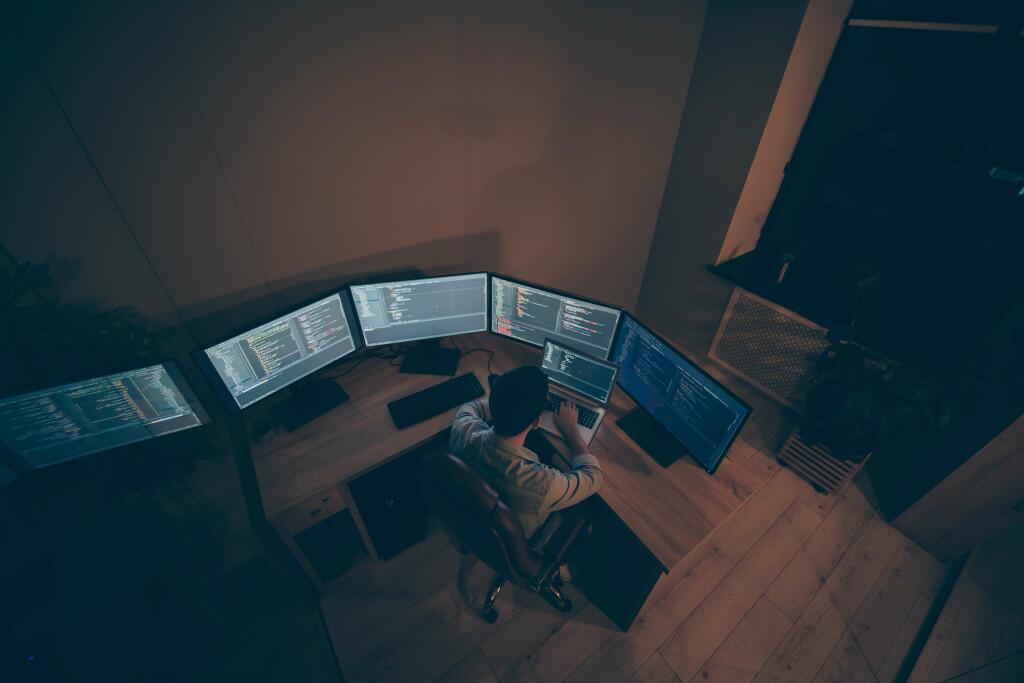Содержание
- Prepare For Whats Ahead In The Retail Industry
- Retail Trends: Apparel Has Flatlined
- Forecast: The Trends To Know
- Latin America Consumer Research Report
- Retail Trends: Rise In Thrift Store Shopping
- Retail Technology Trend #2: Social Commerce
- #8 Community Investments From Retailers May Be Here To Stay
Clothing that’s traded in is then sold through Patagonia’s Worn Wear program. According to our Future of Retail report, supply chain delays continue to loom as a challenge for retailers, with 48% expecting to continue facing those delays in 2022. In terms of other retail challenges, 29% of retail owners and managers worry about remaining competitive against larger big-box stores and 34% are concerned about operating expenses.

To tie the bow on top, retailers will connect in-store offerings to an ecommerce storefront to promote partnerships and enable consumers to jump to various online marketplaces. For 2022, retailers should continue down the remediation path they began at the onset of the pandemic to realize long-term and lasting benefits. In fact, the next 12 months offer opportunities to restructure outmoded supply chains, rightsize inventory management, review pricing, recalibrate promotional cadences, and reinvent the physical store for the digital age. This will likely require entirely new ways of thinking and long-term commitments from retailers, but these efforts could forever shift the way retailers conduct business. That future begins today, by addressing near-term retail challenges with an eye to the future. Mass merchants are still the preferred channel for BTS shopping, but thrift stores have experienced a rise in popularity.
Prepare For Whats Ahead In The Retail Industry
The neighborhood store can help forge local connections with your consumers and save on rental costs. The boom of high-tech processes and experiences that sit within the Metaverse is all due to 5G technology, which can enhance and support AR and VR applications as well as in-store and online customer services. It can also improve personalization by delivering inventory and location information more quickly to customers and provide immersive on-site training for employees. The Alibaba Group, for example, plans to expand its global reach to Australia, Dubai, Europe, and Japan.

When you find what fits, you can give customers exactly what they need while giving you the room to try new things. And when you get to that space where you can pull the levers that work for your store, your future is wide open. Online shopping is essential for consumers and table stakes for retailers.
The Chinese eCommerce giant will likely largely benefit from this expansion. These figures demonstrate that retailers have a vast, untapped opportunity ahead of them and they must establish a retail strategy that can both expand and scale easily. AR-powered commerce isn’t just limited to big names like IKEA; we’re seeing more startups invest in the technology, such as Jisp, who created an AR vouchering system called Scan & Save for brands, independent retailers, and their customers. In the coming years, social networks will now not only be places to discuss and keep up to date with your friends but for retailers to keep in touch with their user base. In fact, 60% of Instagram’s users already use the platform to find and purchase products.
And, keep in mind that while the cloud providers secure the cloud, it is up to the retailer to secure data and applications in the cloud. One of the most important retail industry trends is investment in Omnichannel retail strategies. Research shows that the average digital consumer owns 3.64 connected devices and tends to consult these devices prior to making a purchase. Consumers may look at an item on their mobile and complete the purchase on their iPad, or they may search for an item on the web and pick it up in the store later. The ubiquity of connected devices means that consumers demand a seamless experience across multiple touchpoints.
Retail Trends: Apparel Has Flatlined
Today, shoppers make 37% of their monthly retail purchases online, and many retailers are meeting those needs in stride. Independent retailers can connect with customers locally, and they can also extend their reach by selling online in addition to maintaining their local presence. The retail industry is rethinking the shopping experience in 2022, redefining not only how we shop and sell, but the incredible advantages independent retailers have right now. The cutting-edge retail trends below are guiding each step of the way. Child tax credits, many consumers are still holding on to their wallets this holiday season as a direct response to the pandemic.
- Most of us haven’t worn our business and play attire in nearly a year and will be excited to shop for a new wardrobe and work essentials.
- Tableau is a popular system that makes it easier for organizations to understand their data with interactive visualizations.
- Presently, there are many rapid grocery delivery companies, but only a few will survive.
- During the holiday shopping season, 70% of holiday consumers said that they felt safe while shopping.
- Facebook and Instagram accelerated the deployment of social media platform shop capabilities in 2020 as shopping shifted more significantly online.
Pop-ups are spreading to eCommerce businesses, who are opening temporary stores to test out a neighborhood and get a feel for the performance of their products or services in a real physical space. This can be a preliminary step to opening a permanent location, though some eCommerce retailers do this only temporarily. These smaller spaces allow retailers the flexibility to change the furniture and style more quickly over time, depending on customer needs, products, inventory and trends. The retail shopping experience took an unprecedented turn in 2020 due to the global impact of COVID-19 with online sales, eCommerce websites and curbside pickup taking over the traditional in-person shopping experience.
Forecast: The Trends To Know
This remarkable increase can be attributed to two main factors. First, the pandemic forced many schools and universities to rethink their digital offerings. As a result, many schools are becoming more digitally integrated.

A recent Deloitte survey found that 48% of parents plan to purchase e-learning platform subscriptions and 18% plan to pay for one-on-one online tutors. It identifies the curvature of change in consumer behavior, and the vectors underpinning the shifts we see in retail, to dial in on what is simply a function of change and what is a constant. The research analyzes a retail landscape forever changed by examining the current inflection point, the ensuing supply chain dilemma, and the ultimate shopping effect. While we may not need a closet full of new clothes, this presents an opportunity for retailers looking to ensure their shoppers “look great” in returning to work and play. Most of us haven’t worn our business and play attire in nearly a year and will be excited to shop for a new wardrobe and work essentials.
Facebook and Instagram are creating a closed loop environment for the retail brand , enabling shopper insights, customized ad campaign elements, and targeted product placement in end-user feeds. Facebook and Instagram users can customize what content they see, and retailers can target their content to shoppers that have previously converted. Investing in this service can offer some much-needed respite on your delivery systems. Not only can it save up to 28% of total transportation costs, it gives retailers a chance to reduce their return rate by making sure that customers are happy with their order before leaving the store. Opt for a slow rollout to alleviate teething problems and display live stock levels to save your customers time.
Latin America Consumer Research Report
Retailers should embrace the current disruption and commit to pivot toward the future. The 2021 back-to-school shopping season is in full swing in the United States. Sales are projected to increase by 16% year over year, which puts BTS shopping on track to generate over $32 billion. Last year, shopping was overshadowed by pre-vaccine COVID-19 concerns. Deliver the seamless, omnichannel retail experiences customers expect.
When a retailer doesn’t have a product, has the wrong product, or even worse, doesn’t know if they have a product, they can’t sell it – and their shopper will go elsewhere to find it. The pandemic propelled us into a new digital era of shopping, ushering in new retail technology trends to create a convenient and engaging experience for both retailers and customers. Such advancements have changed the retail landscape, affecting both large and small businesses alike. Brand storytelling is more important than ever, as the retail shopping experience has become about more than just browsing and purchasing products.
This holiday season, retailers will be replacing their top 10 gift guides with individualized guides for customers using proprietary customer data (e.g. purchase history, interests, website behavior, etc.). This will ensure customers are seeing the products they’re most interested in and in turn increase their purchase intent. Many stores are also including different services in their spaces that add to the experience of shopping in person. For example, supermarkets and larger retailers host coffee chain restaurants within their stores, so shoppers can get their caffeine fix while picking up the items they need. To incorporate these retail industry trends into your business, consider digitizing your operations and then trying out new ways of selling.
And it looks like there are stores that have risen to the occasion. During the holiday shopping season, 70% of holiday consumers said that they felt safe while shopping. This might hold true for people who had to resort to shopping online for groceries and other necessities. A survey showed that there was up to a 40% net increase in intent to continue purchasing goods online even when the pandemic is over . In the UK, 5.7 million households shopped for their Christmas groceries online. This could be seen in Tesco’s online grocery sales that reached more than $1.38 billion during the 19-week period.

An angular floor plan, for example, uses curves and angles to provide a sense of sophistication. It is a design that “reduces the amount of display you have but focuses instead on fewer, more popular lines,” according to theVend blog. This floor plan can be particularly effective if you’re looking to showcase a particular product. You can use theTarget Circle appin the store to find deals for the products in the aisles right near you. Plus, you can use the app to scan barcodes of product to see any available deals or discounts. H&M tested a“smart mirror”in its flagship store in New York City in which customers “could voice commands to take selfies that are virtually integrated with the H&M catalogue,” according to Business Insider.
Retail Trends: Rise In Thrift Store Shopping
Retailers that want to provide consumers with unique personalized shopping experiences must invest in advanced technologies – AI or otherwise – and look beyond basic personalization tactics. Though the shopping experience in 2020 may have been more digital than in-person, one of the store design trends for this year continues to be sophistication. In the past, retailers often stocked shelves with as much product as possible. Take a quick drive and check out your local legacy, monolithic mall or even the new outdoor walking entertainment communities and you’ll notice the many empty storefronts.
But according to McKinsey, more than 60% of consumers adopted a new behavior plan to stick with even after the pandemic . The change of direction of retail in the coming years is, surprisingly, not just because of technology but due to changes in consumer behavior. While analysts used to be so sure that e-commerce is the future, the rapid adoption of broadband technology and the shift in “experience over material” commodities have just made e-commerce another channel to shop in. In 2020, outdoor pop-up shops created a way for customers to shop in a safer, more open-air environment. In one example, the Chicago Makers Pop Up Shop opened in December 2020 for the holiday season, featuring 30 locally owned businesses, and has since found a permanent home. This kind of design essentially means creating a comfortable, inviting, home-like atmosphere.
Retail Technology Trend #2: Social Commerce
Rapid business expansion can mean retail organizations struggle to identify who has responsibility for an individual process when it is threatened. Retailers must utilize AI and AR tools in the future to nail sizing and crackdown on the billions of dollars wasted on returns. Not only does sending an item back disrupt the supply chain, but over-ordering due to a lack of trust in sizing leads to large quantities of stock held up in the return process instead of being available to purchase. This will be even more detrimental moving forward as new stock faces delays. Look to companies like MySize and True Fit® that are leading the way in technology-driven solutions.
Technology also continues to dominate the retail shopping experience by providing both convenience and entertainment. QR codes, in particular, have become more popular, especially as a contactless way to shop. QR codes can also be used to enter customers into a contest or giveaway, administer feedback surveys, and capture discount coupon codes, according to a Small Business Trends article. Design innovation is a vital tool for retailers to set themselves apart and draw customers into their stores. Each retail space, regardless of industry — department store, supermarket, drug store, boutique, etc. — should incorporate some of these Retail Design Trends to Watch in 2022 into their spaces.
#8 Community Investments From Retailers May Be Here To Stay
Retailers want customers to feel safe and comfortable, and a lot of that stems from an inviting home-like design, which is a growing retail trend that has become increasingly popular in the interior design industry as a whole. A more sophisticated shopping experience can also mean that less inventory is displayed on purpose. Implementing a successful omnichannel experience starts with your team. Here’s how to train employees to engage with shoppers across 5 important channels. Want more insights on how retail store owners are innovating in 2022?
Retailer expectations in many countries were upbeat at the start of 2022, but the short-term retail sales growth outlook has softened in recent months due to operational challenges, inflation and weaker consumer sentiment in some markets. COVID continues to disrupt daily life, with people in Hong Kong, Shanghai and other Chinese cities going through a period of tightened measures. Other countries in Asia and Europe are loosening and ending containment restrictions. In 2021, look for retailers to take advantage of lower rents to engage in store with their traditionally digital shoppers.
Private label market share is expected to rise to 25% in the next 10 years due to millennials’ shopping habits (Frozen & Refrigerated Buyer). Wood flooring can make a space warm and welcoming; engineered hardwood and wood-look LVT are great for this trend. The space features a range of home design options for small living spaces, which caters to the surrounding clientele. Customers can also book free design appointments with an employee. Technological enhancements to the retail experience can mean everything from smart technologies to using customer-driven data. At New Balance’s flagship store in Brighton, Mass. customers can get a 3D scan of their foot, giving them the exact specifications and ideal fit for their shoe purchase.
Three Retail Industry Trends And Priorities
Many things are uncertain right now, but with the right planning, we can help you migrate risk and accurately assess business opportunities. If retailers aren’t thinking about their role in the Metaverse, they’re already behind the curve. NFT technology has proven successful for retailers like Burberry, where its instant sell out Digital Blankos Block Party collectible generated $225,000 in https://globalcloudteam.com/ sales within 30 seconds of launching. As 5G coverage becomes more widespread, AR and VR will see a more mainstream application. Despite its appeal, checkout free technology is a niche concept that only attracts tech-savvy buyers. It requires customers to have a smartphone and a specific app, as well as to register payment information and, in some cases, to enter and exit using a QR code.
Shifting patterns of work and leisure have accelerated further, and ESG considerations have moved to the foreground. S&P Global Ratings’ Industry Top Trends series sets out our industry experts’ assumptions Online Retail Industry Trends in 2026 for 23 industries in 2021, key risks to these, and updated heatmaps describing the shape of the recovery. With this mental model in mind, let’s review the retail tech trends to watch in 2021.
